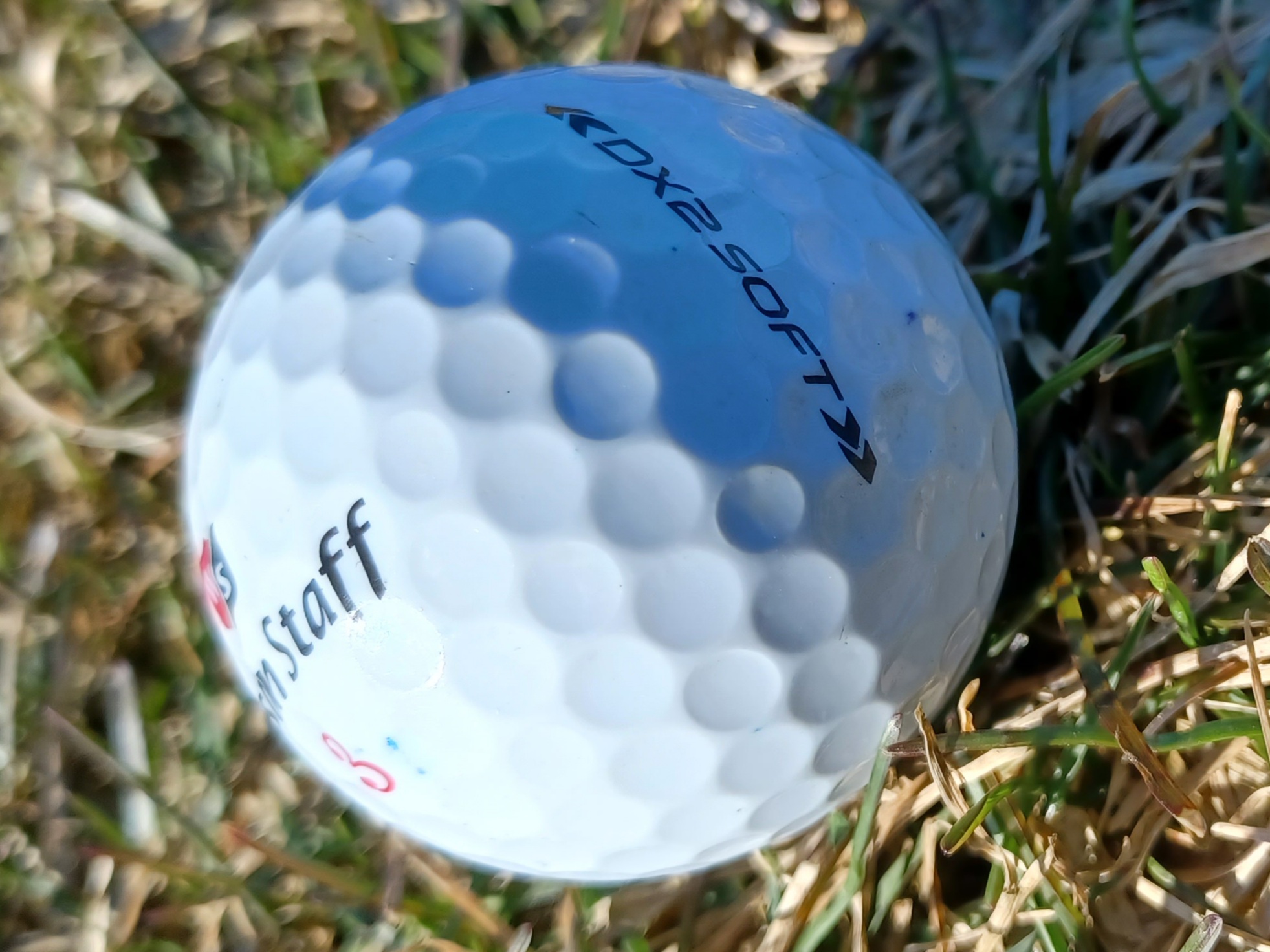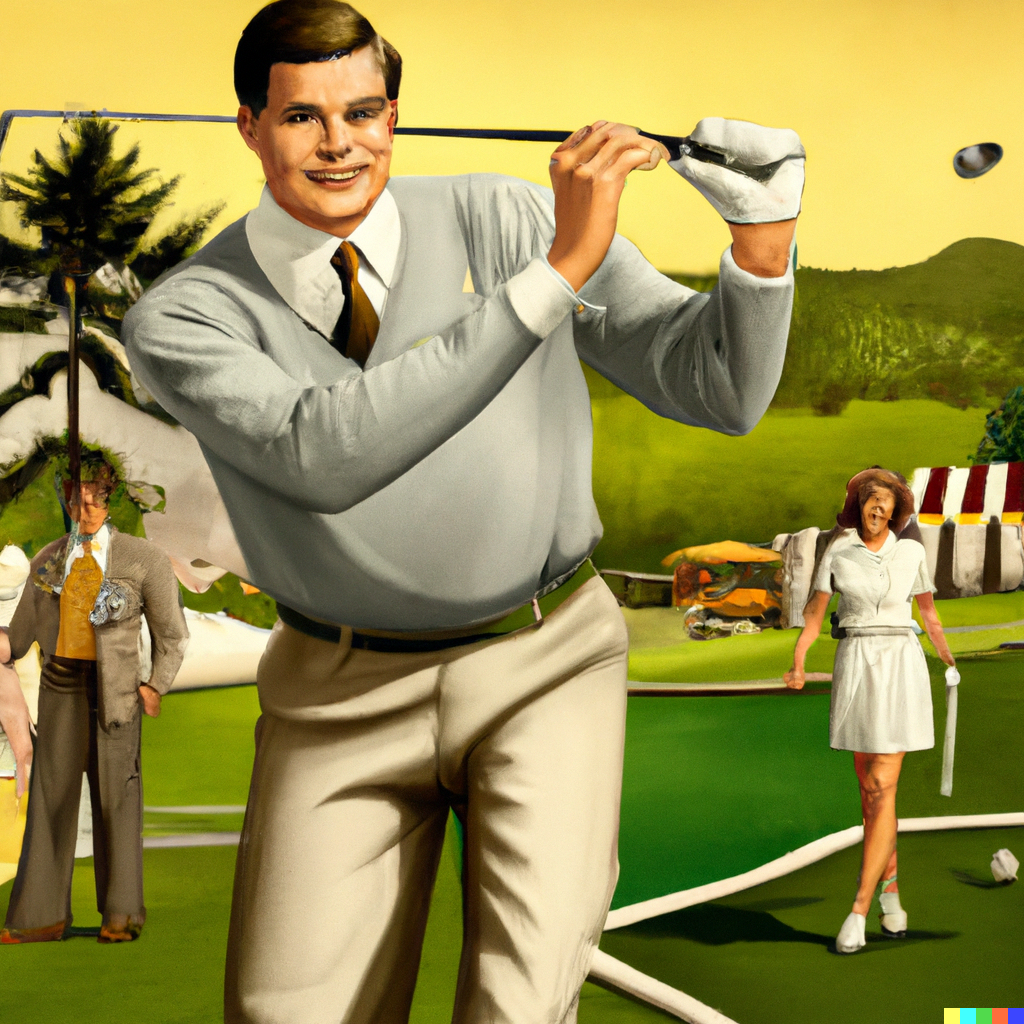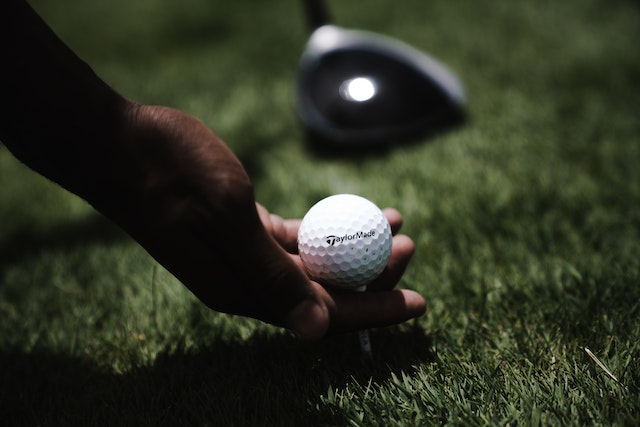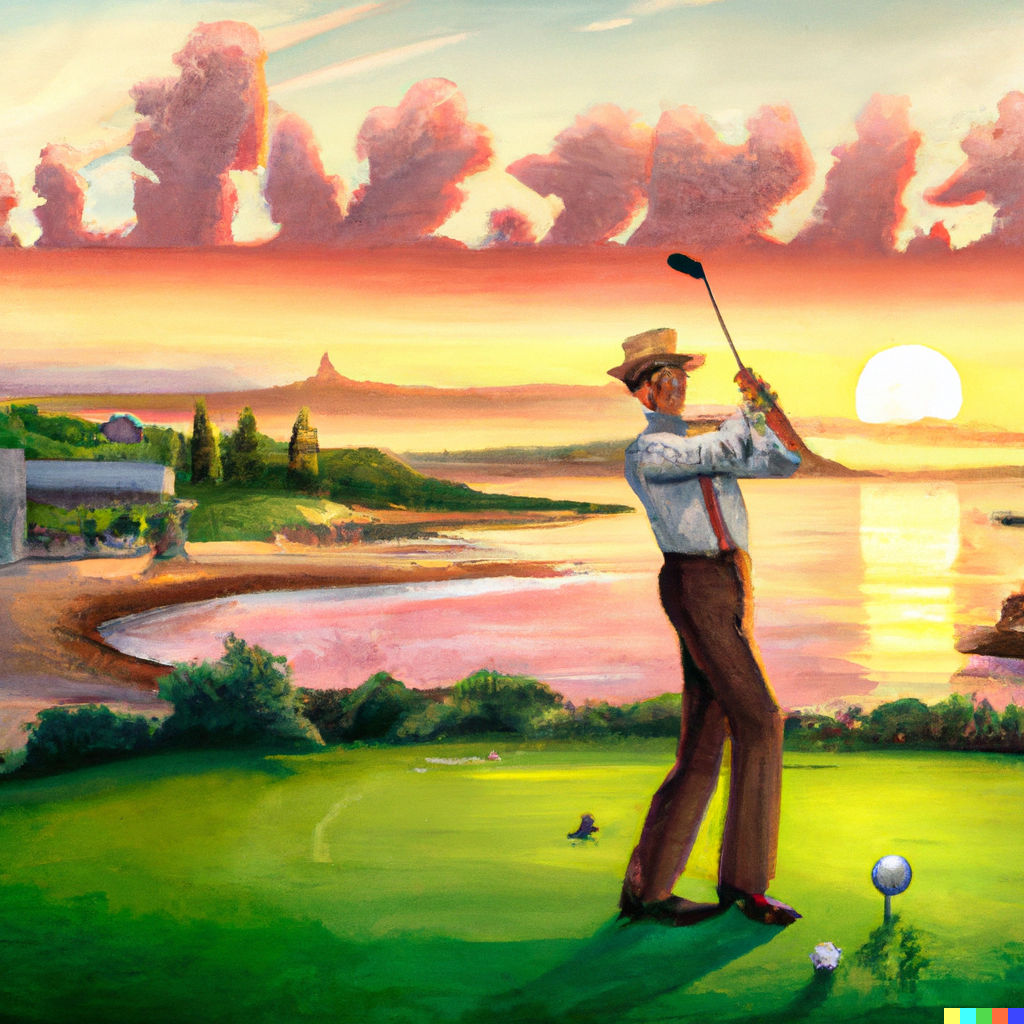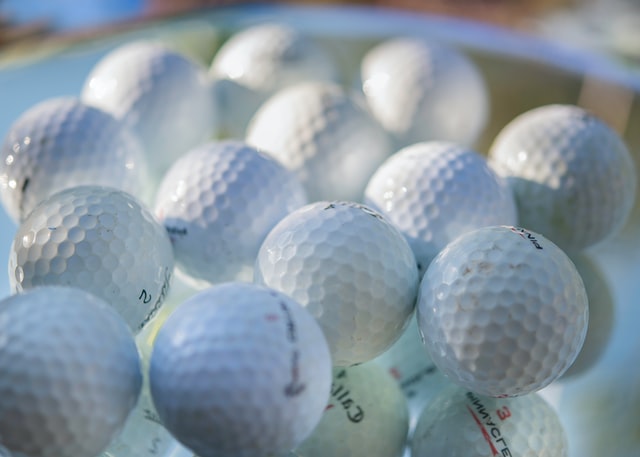- Home
- Equipment
- Golf Balls
- Golf Ball Selection Cold Weather
5 Cold Weather Golf Ball Secrets That Actually Work in Winter
I am a weekend golfer, and let me tell you, nothing frustrates me more than watching my drives fall 20 yards short when the temperature drops. After years of winter golf with my buddies, I've discovered that the right golf ball selection can make the difference between shooting your personal best and losing three strokes to the cold. These aren't expensive pro secrets – they're practical discoveries that any weekend warrior can use to finally beat winter's grip on their game.
Cold weather doesn't have to ruin your rounds or force expensive equipment upgrades. Smart ball selection, proper storage, and understanding what really happens when temperatures drop can help you maintain distance and impress your buddies even when Jack Frost shows up on the first tee.
How Does Cold Weather Actually Affect Golf Ball Performance?
Understanding what happens to your golf ball in cold weather is the first step to fighting back against winter's distance-stealing effects.
According to research conducted by Andrew Rice (Golf Digest Top 100 Teacher, TrackMan Master, 25+ years teaching experience), golfers lose roughly two yards with each club for every 10-degree drop in temperature below 75 degrees. His study, conducted at his 2018 Coach Camp conference using TrackMan launch monitor data, revealed this consistent pattern across all clubs in the bag.
The science behind this distance loss involves two key factors working against you. First, cold air becomes denser than warm air, creating additional drag that slows your ball's flight. As Gene Parente (founder of Golf Laboratories, golf equipment testing expert for 30+ years, developer of industry-standard testing robots used by major manufacturers) explains, "Cold air creates more resistance, which further shortens distance."
But there's a second factor that many weekend golfers don't realize: the golf ball itself changes in cold temperatures. According to MyGolfSpy research, extremely cold temperatures (22-32 degrees) create lower ball speed, spin rates, launch angle, and carry. Collectively, this leads to a loss of 21 yards of carry distance versus golf balls stored in warm temperatures (70-90 degrees).
Last winter, I learned this lesson the hard way during a round with my regular foursome. My usual drives that carry 240 yards in summer were barely reaching 220 yards on a 35-degree morning. The ball felt different off the clubface – harder, less responsive, and definitely shorter.
🌡️ Cold Weather Distance Loss Reality
- 📊 2 yards lost per club for every 10°F drop below 75°F
- ❄️ Up to 21 yards lost with extremely cold balls (22-32°F)
- 🌬️ Dense cold air creates additional drag on ball flight
- 🔴 Ball materials lose flexibility and compression
The materials in golf balls lose flexibility as temperatures drop, leading to reduced compression when the ball contacts your clubface. This means less energy transfer and shorter shots. According to Titleist research, golfers experience approximately 1.5 percent drop in distance for every 20-degree drop in temperature.
So read on. What's more, understanding these effects gives you the power to choose equipment that fights back against winter's performance-killing grip.
Should You Use Different Golf Balls in Cold Weather?
The short answer is yes – but not for the reasons most golfers think.
Many weekend golfers believe they should automatically switch to lower compression balls in winter, but this oversimplifies the science. As Titleist explains in their technical guidance, "It's a common misconception that you should switch to a lower compression golf ball in colder conditions. If you play with balls that are at near room temperature, this becomes a moot point."
The real key isn't just compression – it's choosing balls designed to perform consistently across temperature ranges while maximizing the specific benefits you need in winter conditions.
Through trial and error with my golf buddies over several winter seasons, I've discovered that the best cold weather ball strategy focuses on three priorities: maintaining distance, improving visibility, and saving money on balls you're more likely to lose in rough winter conditions.
Here's what actually works:
Distance-focused balls become more valuable in winter because they help offset the natural distance loss from cold air density. According to expert testing, distance balls like TaylorMade Distance+ and Titleist Velocity maintain their performance characteristics better in cold conditions due to their firmer construction and aerodynamic design.
Low compression balls (70 compression or below) compress more easily even when cold, helping you maintain ball speed off the clubface. Popular options include Callaway Supersoft (38 compression), Wilson Duo Soft (40 compression), and OnCore AVANT 55 (55 compression).
High-visibility colored balls become essential in winter's low-light conditions, frost, and leaf-covered rough. The difference between finding your ball and losing it often comes down to color choice.
But there's more. The biggest mistake I see weekend golfers make is overthinking compression numbers while ignoring storage and ball rotation strategies that have immediate impact.
⛳ Smart Winter Ball Strategy
- 🚀 Distance balls help offset cold air drag
- 🟡 Colored balls improve visibility in winter conditions
- 💰 Save premium balls for summer, use value balls in winter
- 🔄 Ball rotation keeps them warmer during rounds
What Are the Best Golf Ball Options for Cold Weather?
After testing dozens of balls through multiple winter seasons with my regular playing partners, here are the cold weather champions that actually work for weekend golfers:
Budget-Friendly Distance Champions
Bridgestone e6 Speed stands out as the top performer in cold conditions. The two-piece construction and low compression allow this ball to fly in dense air, while the unique Dual Dimple pattern reduces sidespin, making it super stable in winter wind. Golf equipment testing shows this ball maintains distance better than expected in cold temperatures, and the yellow version provides excellent visibility on frosty mornings.
TaylorMade Distance+ offers incredible value for winter golf. These distance balls help retain your normal yardages when cold air tries to steal them. According to professional testing, distance balls become even more valuable in winter because they're specifically designed to fight air resistance – exactly what you need when cold air becomes denser.
Wilson Duo Soft provides the perfect combination of low compression (40) and affordability. This two-piece ball compresses easily even in cold conditions, and its durability means you won't cringe when it disappears into winter rough.
Premium Performance Options
Titleist Velocity earns its reputation as one of the best all-weather distance balls. According to Andrew Rice, "Distance balls like the Velocity maintain performance characteristics better in cold conditions due to their aerodynamic design." The velocity combines distance with enough greenside performance to satisfy better players.
Callaway Supersoft features ultra-low 38 compression that stays playable even when temperatures drop below freezing. The Supersoft's Tri-Ionomer cover provides increased control and spin, making it reliable for cold weather play.
Vice Pro Air is built with mid-to-high compression and optimized for high launch angle, making it a reliable choice in cooler weather. While it won't completely offset the cold, it's designed to deliver consistency when standard balls might fall short.
My personal winter bag now includes Bridgestone e6 Speed balls in yellow for regular play, with a few Titleist Velocity balls saved for important rounds. This combination gives me reliable distance, great visibility, and won't break the bank when I inevitably lose a few in the winter rough.
Let me explain. The key insight from my testing is that you don't need to spend Pro V1 money to get Pro V1 performance in winter conditions. In fact, some distance balls actually outperform premium balls in cold weather because they're designed to fight air resistance.
🏆 Top Cold Weather Ball Picks
- 🥇 Bridgestone e6 Speed: Best overall cold weather performance
- 💰 TaylorMade Distance+: Best value for winter golf
- 🎯 Titleist Velocity: Premium distance ball that works in cold
- 🟡 Any colored option: Essential for winter visibility
Should You Store Golf Balls Indoors During Winter?
Absolutely – and this might be the easiest improvement you can make to your winter golf game.
As Gene Parente explains on Golf's Fully Equipped podcast, "Below 55 degrees is when you start to see degradation. If it gets cold, don't keep your golf balls in the trunk or golf bag. Bring them inside. The core gets cold and it takes an hour for it to warm up."
Here's the science: when golf balls get cold, their materials lose resiliency, resulting in reduced initial velocity off the clubface. According to verified research, golf balls stored at room temperature (70-90 degrees) versus extremely cold storage (22-32 degrees) show a 21-yard difference in carry distance.
I learned this lesson during a December round last year. I grabbed balls from my car trunk where they'd been sitting overnight in 25-degree weather. Compared to the warm balls I kept in my house, the difference was immediately noticeable – not just in distance, but in feel off the clubface.
Simple Indoor Storage Strategy:
- Keep a dozen balls inside your house year-round
- Bring them directly to the course on cold days
- Avoid leaving balls in car trunks or unheated garages
- If balls do get cold, let them return to room temperature gradually
Legal Ball Warming During Rounds: According to the Rules of Golf (Decision 14-3/13.5), while artificially heating golf balls during a round violates Rule 14-3, balls warmed prior to a round are perfectly legal. You can also rotate between balls during play, keeping one in your pocket while using the other – this keeps them closer to body temperature.
And here's why this matters more than you think: the difference between a room temperature ball and a cold ball can be the difference between reaching the green in regulation or coming up short in a bunker.
Pro tip from my weekend warrior experience: Fill a small insulated bag or thermos with room temperature water and keep your golf balls in it on the way to the course. This simple trick ensures they stay warm until you tee off.
🏠 Smart Storage Secrets
- 🏡 Store golf balls indoors at room temperature year-round
- 🚗 Never leave balls in car trunks during winter
- 🔄 Rotate balls during play, keep one in your pocket
- ⚖️ 21-yard distance difference between warm vs. cold storage
Do Colored Golf Balls Really Help in Winter Conditions?
Yes, and the difference is dramatic – especially for weekend golfers who don't want to spend time hunting for lost balls in winter rough.
Winter conditions create perfect storms for lost golf balls: low light conditions, frost-covered grass, fallen leaves, and dormant vegetation that blends with white golf balls. According to equipment experts, choosing brightly colored golf balls can be the difference between losing a ball in semi-rough or finding it quickly.
During my testing last winter, I played alternate shots with white and yellow balls on the same holes. The yellow balls were consistently easier to spot, even in conditions I thought were "pretty clear." My golf buddy started calling the yellow Bridgestone e6 balls "winter finders" because we spent significantly less time searching.
Most Effective Winter Colors:
- Yellow: Best overall visibility in low light and frost
- Orange: Excellent contrast against autumn leaves and winter grass
- Pink: Surprisingly effective against winter backgrounds
- Green (matte): Good for snowy conditions, though less common
Visibility Benefits Beyond Finding Lost Balls: Colored balls also help you track ball flight in overcast conditions common during winter golf. When the sky is gray and the light is flat, following a white ball's trajectory becomes challenging. Bright colors cut through these visibility issues.
High-visibility balls also provide psychological benefits – you feel more confident taking aggressive lines when you know you can track and find your ball easily.
However, there's a practical consideration: not all colored balls perform as well as their white counterparts. Stick with major manufacturer colored versions (Titleist Velocity yellow, Bridgestone e6 yellow, Callaway Supersoft pink) rather than unknown brands that prioritize color over performance.
Most importantly, colored balls cost the same as white balls from quality manufacturers, so there's no financial penalty for the visibility upgrade.
🌈 Color Choice Strategy
- 🟡 Yellow: Best overall winter visibility
- 🟠 Orange: Great contrast against autumn leaves
- 👁️ Easier ball tracking in overcast conditions
- 💰 Same price as white balls from major manufacturers
How Much Distance Do You Actually Lose in Cold Weather?
The research is clear, and the numbers are significant enough that smart weekend golfers need to adjust their club selection and expectations.
According to the comprehensive study by Andrew Rice (Golf Digest Top 100 Teacher), golfers lose roughly two yards with each club for every 10-degree drop in temperature below 75 degrees. This means if you normally carry your 7-iron 150 yards in 75-degree weather, you'll carry it approximately 146 yards in 55-degree weather.
Titleist research confirms similar findings, showing approximately 1.5 percent drop in distance for every 20-degree drop in temperature. For a golfer who carries their driver 250 yards, that 1.5 percent drop equals 3.75 yards – and that's just from air temperature effects alone.
But here's where it gets more dramatic: the MyGolfSpy study revealed that extremely cold golf balls (22-32 degrees) lose 21 yards of carry distance compared to balls stored in warm temperatures (70-90 degrees). This is distance loss from the ball itself becoming less responsive, separate from air temperature effects.
Real-World Distance Loss Breakdown:
- 40°F vs. 70°F: Expect 4-6 yards less carry per club
- 30°F vs. 70°F: Expect 6-8 yards less carry per club
- Cold ball effect: Additional 15-21 yards lost if ball is cold
- Combined effect: Total distance loss can reach 25+ yards on drives
During my winter testing, I tracked my distances across multiple temperature ranges. At 70 degrees, my driver averaged 245 yards carry. At 40 degrees with properly stored warm balls, I averaged 239 yards. At 40 degrees with cold balls from my car trunk, I averaged only 228 yards – a 17-yard difference that consistently left me short of targets.
Smart course management in cold weather means taking one extra club for approach shots and accepting that your driver won't reach summer distances. The good news? Once you understand these numbers, you can plan accordingly and still score well.
Why does this matter? Because coming up short costs you strokes. Knowing you'll be 10-15 yards shorter allows you to adjust club selection and still hit greens in regulation instead of constantly coming up short and scrambling.
📏 Distance Loss Numbers
- 🌡️ 2 yards lost per club for every 10°F drop below 75°F
- ❄️ Up to 21 additional yards lost with cold balls
- 🎯 Total driver distance loss: 15-25 yards in winter
- 📊 Take one extra club for approach shots
Key Takeaways for Smarter Cold Weather Golf
Winter golf doesn't have to demolish your scores if you make smart equipment choices and adjust your strategy. After years of trial and error with my golf buddies, these five secrets have transformed my cold weather performance:
Ball Selection Strategy: Choose distance-focused balls over premium tour balls in winter. Bridgestone e6 Speed, TaylorMade Distance+, and Titleist Velocity maintain performance better in cold conditions while costing less than premium options. Save your Pro V1s for summer when their advanced features shine.
Storage Makes the Difference: Store golf balls indoors at room temperature year-round. The 21-yard distance difference between warm and cold balls is free distance you can't afford to give up. Rotate balls during play to keep them warmer.
Color Is Your Friend: Yellow, orange, or pink balls dramatically improve visibility in winter's low-light conditions, frost, and leaf-covered rough. You'll spend less time searching and more time playing golf.
Manage Your Expectations: Expect 2 yards less distance per club for every 10-degree drop below 75°F, plus additional distance loss from cold air density. Take one extra club for approach shots and adjust your course management accordingly.
Budget Wisely: Winter is the perfect time to play value-priced distance balls. You're more likely to lose balls in winter conditions, so save money on equipment while maintaining performance through smart selection.
Understanding these fundamentals gives weekend golfers the tools to maintain consistent performance despite winter's challenges. The goal isn't just surviving cold weather golf – it's playing smart golf that impresses your buddies regardless of temperature.
Most importantly, don't let cold weather keep you off the course. With proper ball selection and storage, winter golf can be just as enjoyable and rewarding as summer rounds. The courses are less crowded, greens fees are lower, and shooting a good score in tough conditions feels even better.
Now here comes the good part: implementing these strategies requires no swing changes, expensive equipment, or professional instruction. It's simply smart equipment management that any weekend golfer can master immediately.
What Golf Ball Should I Use for My Winter Game?
For High Handicappers (15+ handicap): Choose value-focused distance balls like TaylorMade Distance+ or Wilson Duo Soft. These balls provide maximum distance to offset cold weather losses while minimizing financial impact when you lose balls in winter rough.
For Mid Handicappers (8-15 handicap): Bridgestone e6 Speed or Titleist Velocity offer the best balance of distance, feel, and performance in cold conditions. The e6 Speed's dual dimple design works particularly well in dense cold air.
For Low Handicappers (Under 8 handicap): Consider switching from your summer premium ball to a mid-tier option like Callaway Chrome Soft or staying with distance balls for winter. The advanced spin characteristics of tour balls become less beneficial in cold, wet conditions.
For All Handicaps: Choose colored versions (yellow or orange) of whatever ball you select. The visibility advantage is worth it regardless of skill level.
Why does this work? Because winter golf prioritizes distance and visibility over fine-tuned spin control around the greens. Cold, wet conditions reduce spin effectiveness anyway, making distance and findability more valuable.
What about compression numbers? Focus on overall ball design rather than specific compression ratings. Modern golf balls perform well across temperature ranges when properly stored and selected for winter conditions.
Should I Change My Ball Every Few Holes in Cold Weather?
Yes, rotating between two balls can help maintain performance, but the technique matters more than most weekend golfers realize.
The Rules of Golf allow you to keep a spare ball in your pocket and rotate between balls hole-by-hole. This keeps the idle ball closer to body temperature while the other is in play. However, there are practical limitations to this strategy.
Effective Rotation Method:
- Use Ball A on holes 1, 3, 5, etc.
- Keep Ball B in your warm pocket during those holes
- Switch balls on the tee, not mid-hole (Rules compliance)
- Both balls should be the same model for consistency
When Rotation Helps Most:
- Temperatures below 40°F
- Rounds longer than 4 hours
- Wet conditions that cool balls faster
- Windy conditions that increase ball exposure time
During my testing, ball rotation provided noticeable benefits in extreme cold (below 35°F) but minimal difference in moderate cold (40-50°F). The bigger factor was starting with room-temperature balls rather than cold ones from car storage.
But there's more to consider: the psychological benefit of knowing you're doing everything possible to maintain performance can improve confidence and course management decisions.
Practical Reality Check: Ball rotation works best when combined with proper storage and appropriate ball selection. It's not a magic bullet but rather one tool in a comprehensive winter golf strategy.
Most weekend golfers find that proper storage makes a bigger difference than rotation, but combining both strategies maximizes winter performance.
